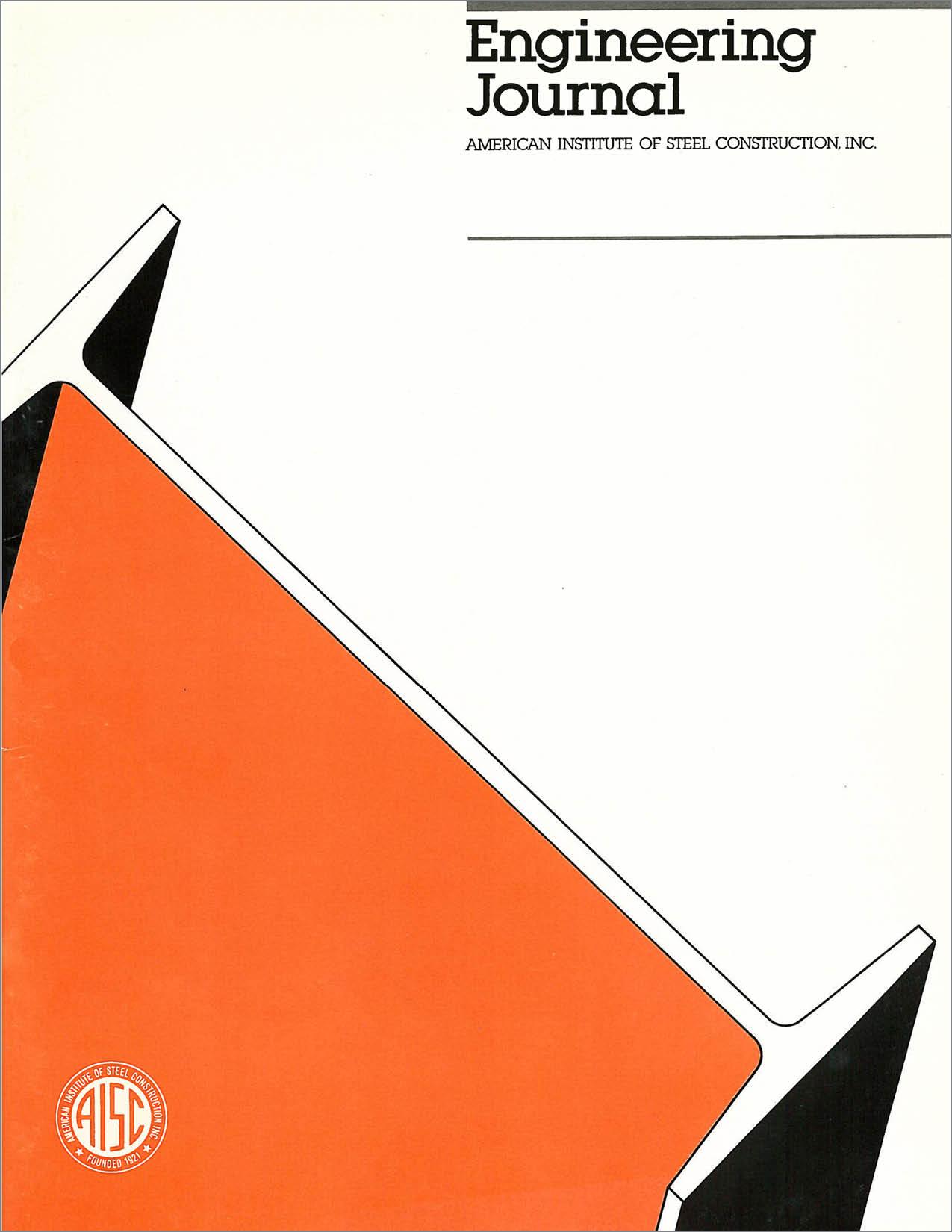Analytical Criteria for Stitch Strength of Built-Up Compression Members
DOI:
https://doi.org/10.62913/engj.v29i3.593Abstract
In the buckled configuration of a built-up compression member, shear force is developed between individual components due to secondary moments caused by P-deffect. AISC-ASD1 requires that stitches be designed such that they have adequate strength to resist the shear force developed between individual components. AISC-LRFD also has a similar requirement (see Section E4, p. 6-40). However, neither specification gives a procedure to calculate the shear force developed between individual components in a buckled configuration. This paper presents a derivation of analytical equations to calculate the shear force developed between individual components of built-up struts in buckled configuration. The equations are presented for two cases. First, for the case in which only the first buckling load is of interest. Second, for the case in which, in addition to the first buckling load, post-buckling bending is involved such as in seismic-resistant design. The proposed equations are general enough so that they are applicable to any end condition including the two extreme cases of hinged-and fixed-end conditions. The proposed equations are verified analytically and experimentally. For analytical verification, the results from the proposed equations are examined for the extreme cases of end conditions and separation between the components. For experimental verification, test results by the authors are used. The stitch strength required for some test specimens are calculated according to the proposed equations. The results are compared with actual strength provided by the stitch welds of the corresponding specimens. It was found that specimens which suffered unsymmetrical buckling and/or post-buckling behavior did not have adequate stitch strength according to the proposed equations.

